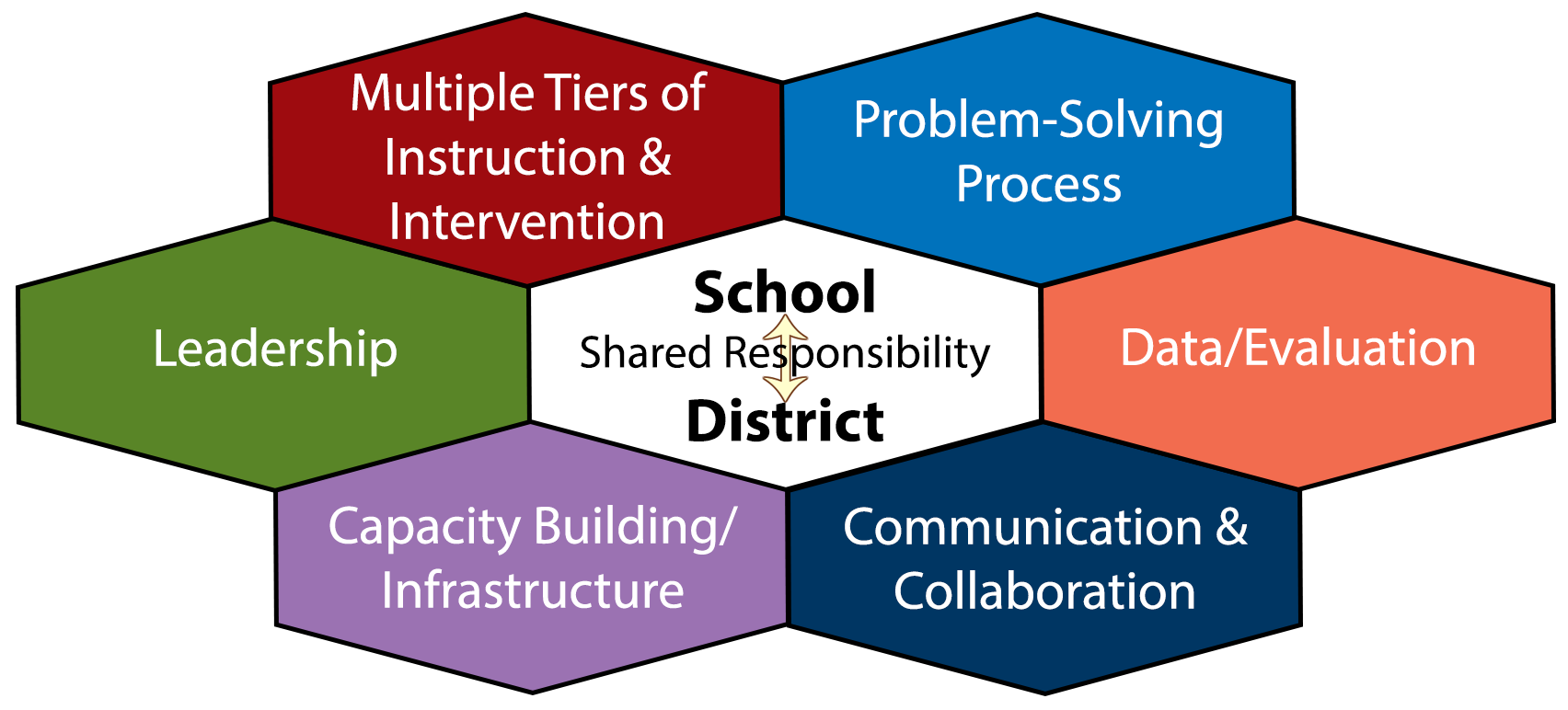To help facilitate and inform implementation of a problem-solving and response-to-intervention model in the state, the Florida Department of Education and the University of South Florida have partnered to create the Florida Problem Solving/Response to Intervention (PS/RtI) Project. The PS/RtI Project is committed to supporting Local Education Agencies (LEAs) and schools to improve student outcomes through data-driven problem solving within a Multi-Tiered System of Supports (MTSS). With a strong focus on improving results for all students, especially those with disabilities, the project offers a continuum of services to address LEA goals and needs. These services may include but are not limited to: partnering with LEAs to engage in collaborative, intensive systems-level problem solving; ongoing consultation and technical assistance; and access to high-quality resources such as asynchronous professional learning modules and comprehensive guidance documents.
Vision
The vision of the Florida Problem Solving/Response to Intervention Project is that within one universal education system, all Florida educators will use an effective and efficient multi-tiered system of supports to ensure student growth in academic, behavioral, emotional, and life skills.
Mission
The mission of the Florida Problem Solving/Response to Intervention Project is to accelerate and maximize the growth of academic, behavioral, emotional, and life skills of every student by enhancing the capacity of all Florida educators to:
- Create and sustain one universal education system (design, implementation, evaluation) and
- Successfully use and sustain a multi-tiered system of student supports with fidelity in every district, school, and classroom.

Six Critical Domains
Multiple Tiers of Instruction & Intervention
The three-tiered instructional/intervention model is a critical element of MTSS implementation. In a typical system, Tier 1 includes the instruction delivered to all students; Tier 2 includes supplemental instruction or intervention provided to students not meeting benchmarks; and Tier 3 includes intensive, small-group or individual interventions for students facing significant barriers to learning the skills required for school success. It is important to consider academic, behavioral, emotional, and life skill instruction and interventions when examining this element.
Problem-Solving Process
The use of data-based problem solving to make educational decisions is a critical element of MTSS implementation. This includes the use of data-based problem solving for student outcomes across content areas, grade levels, and tiers, as well as the use of problem solving to address barriers to school wide implementation of MTSS. While several models for data-based problem solving exist, the four-step problem solving approach includes: 1) defining the goals and objectives to be attained, 2) identifying possible reasons why the desired goals are not being attained, 3) developing a plan for and implementing evidence-based strategies to attain the goals, and 4) evaluating the effectiveness of the plan.
Data/Evaluation
Given the importance of data-based problem solving within an MTSS model, the need for a data and evaluation system is clear. In order to do data-based problem solving, school staff need to understand and have access to data sources that align with the purposes of assessment. Procedures and protocols for administering assessments and using data allow school staff to use student data to make educational decisions. In addition to student data, data on the fidelity of MTSS implementation allow school leadership to examine the current practices and make changes to increase implementation.
Communication and Collaboration
Ongoing communication and collaboration are essential for successful implementation of MTSS. Many innovations fail due to a lack of consensus, to a lack of feedback to implementers to support continuous improvement, and to not involving stakeholders in planning. In addition to including stakeholders in planning and providing continuous feedback, it is also important to build the infrastructure to communicate and work with families and other community partners. These practices increase the likelihood that innovative practices will be implemented and sustained.
Capacity Building/Infrastructure
Schoolwide capacity and infrastructure are required in order to implement and sustain MTSS. This capacity and infrastructure usually includes ongoing professional development and coaching with an emphasis on data-based problem solving and multi-tiered instruction and intervention, scheduling that allows staff to plan and implement instruction and intervention, and processes and procedures for engaging in data-based problem solving.
Leadership
Leadership is key to successful implementation of any large-scale innovation. The building principal, assistant principal(s), and school leadership team are critical to implementing MTSS at the school level. They engage staff in ongoing professional learning for implementing MTSS, plan strategically for MTSS implementation, and model a data-based problem solving process for school improvement. The school principal also supports the implementation of MTSS by communicating a vision and mission to school staff, providing resources for planning and implementing instruction and intervention, and ensuring staff have the data needed for data-based problem solving.

